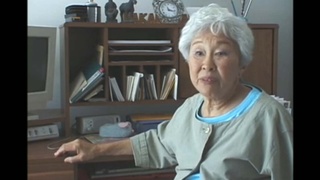Interviews
Yoshitaro Amano, Forced to Return to Japan by Prisoner of War Exchange Ship (Japanese)
(Japanese) Before the war, Amano had been running trade in Panama. Then, once the trade went well he expanded it to Ecuador and Costa Rica. We also had an acquaintance in Peru and so after that we passed through Lima, bought land in Concepción, Chile, and started a large farm there.
I*: When was this?
This was before the war. Up until the war started. Then, once relations between the U.S. and Japan got to be not so good, Amano quickly sent his wife and two children from his earlier family back to Japan. While he was staying on in Panama, he was arrested by detectives from the U.S. He was put into a prison and then sent to the U.S., where he stayed for almost a whole year. He returned to Japan on Exchange Ship No. 1.
* "I" indicates an interviewer (Ann Kaneko)
Date: April 18, 2007
Location: Lima, Peru
Interviewer: Ann Kaneko
Contributed by: Watase Media Arts Center, Japanese American National Museum









